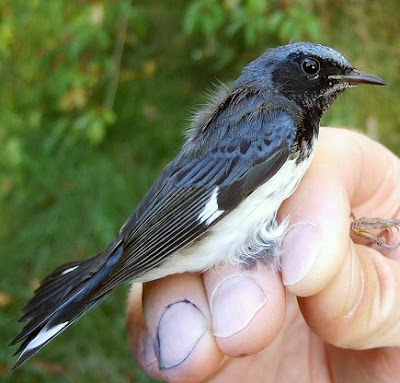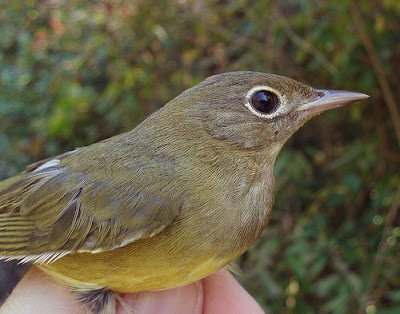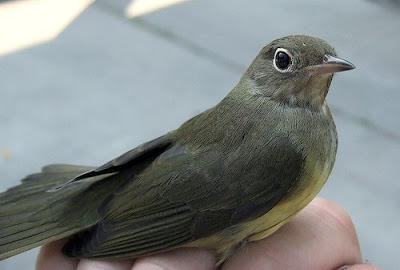The composition of species indicates that we are in the final stretch for fall banding, and winter is knocking on our door. This week, our first American Tree Sparrow was banded.

And a favorite winter visitor, a Red-breasted Nuthatch. On campus, there aren't many conifers; in the banding area there are just two scraggly cedars. So it's always a treat to catch one of these cuties.

Of all the species we band, none is as indignant as the Tufted Titmouse. From the minute you start taking them out of the net to the second you let one go, they let you know how thoroughly offended they are at this whole banding process. There is a continuous barage of weird sounds, from evil hissing to extremely high-pitched, piercing whistles. Titmouse can make these noises while simultaneously pecking and biting. They are just 20 grams of pissed-off bird!

We banded four titmice this week (3 in one net). That's kind of unusual for us.
As you can see from the running stats on the sidebar, we are still well under the average capture rate for the season. Things have been picking up -- this week our capture rate was 48.7 birds per hundred net hours -- but still quite dismal. In general, this is probably not too surprising given the trends of the last couple of years. Following the terrible deep freeze of the spring of 2007, we had a
poor banding season last fall, and
this spring migration had the lowest numbers since I've been counting here on campus.
I've heard from some observers that did not see this trend. Typically, they have gone birding during peak times at known migrant traps such as Crane Creek in Ohio, or Tawas Point or Whitefish Point in Michigan. This doesn't surprise me much -- coastal areas and migrant traps can be expected to congregate birds that may be reluctant to cross, or have just passed over, an ecological barrier. This is, of course, why people like to bird at these places and why bird observatories and banding stations are often located at these sites. Migration ecology experts theorize that inland sites, such as the UMD campus, present a more accurate representation of stopover behavior, because birds use inland sites only if appropriate resources are available.
This brings up the interesting point that our monitoring efforts may produce results unbiased by the "migrant trap effect". Certainly it offers a contrast to other data. Sure, I am sometimes disappointed by the low numbers of banded birds. But I'm not in any sort of competition here. I always keep in mind that low data or no data are themselves valid results, and tell their own important story.
 The Metro Times has come out with its annual Best of Detroit results. Readers are polled on their favorite things and places around metro Detroit, and the staff also gives its picks. The Metro Times picked the UM-Dearborn natural area as The Best Urban Getaway for 2008. The write-up notes:
The Metro Times has come out with its annual Best of Detroit results. Readers are polled on their favorite things and places around metro Detroit, and the staff also gives its picks. The Metro Times picked the UM-Dearborn natural area as The Best Urban Getaway for 2008. The write-up notes:














